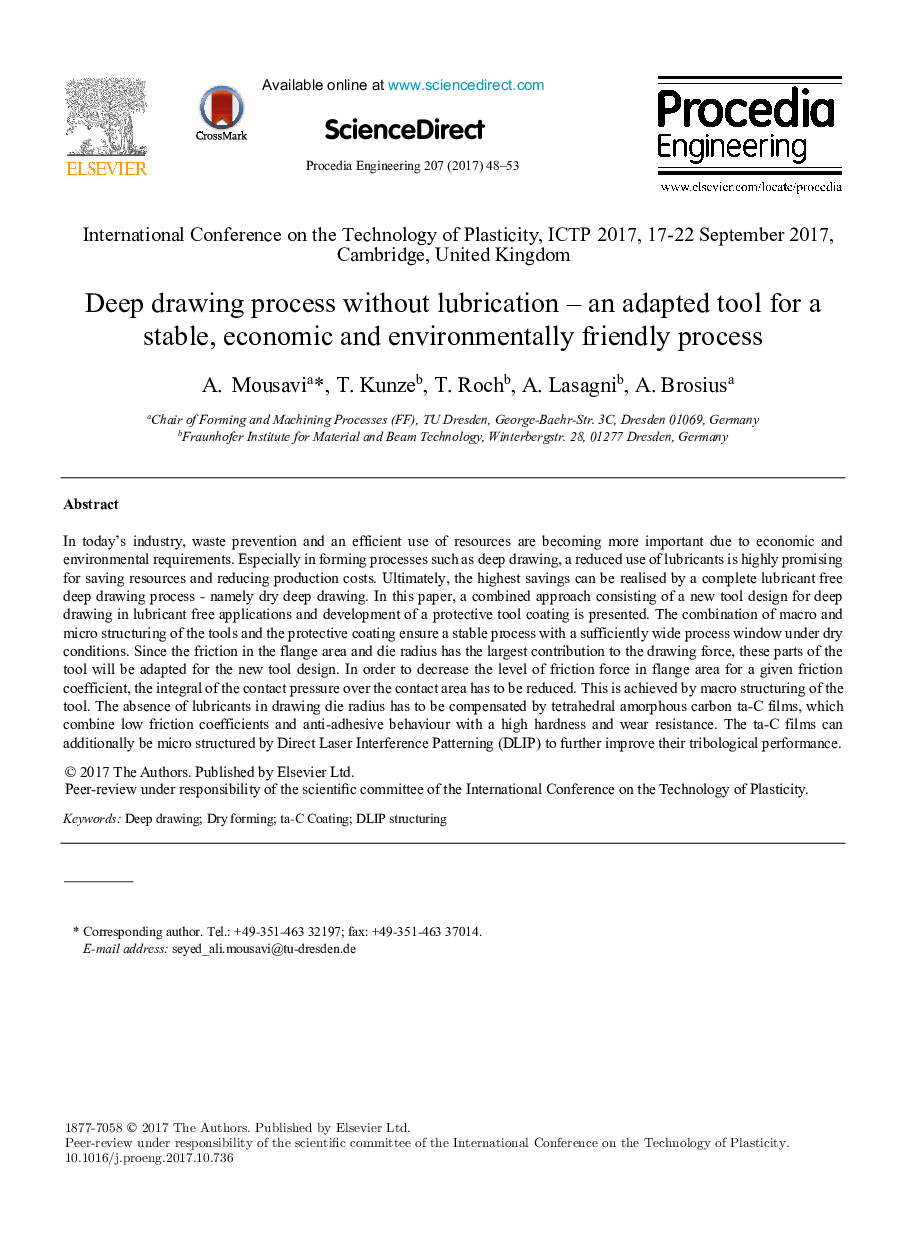| کد مقاله | کد نشریه | سال انتشار | مقاله انگلیسی | نسخه تمام متن |
|---|---|---|---|---|
| 7227011 | 1470619 | 2017 | 6 صفحه PDF | دانلود رایگان |
عنوان انگلیسی مقاله ISI
Deep drawing process without lubrication - an adapted tool for a stable, economic and environmentally friendly process
ترجمه فارسی عنوان
فرایند رسم عمیق بدون روانکاری - یک ابزار سازگار برای روند پایدار، اقتصادی و سازگار با محیط زیست
دانلود مقاله + سفارش ترجمه
دانلود مقاله ISI انگلیسی
رایگان برای ایرانیان
کلمات کلیدی
موضوعات مرتبط
مهندسی و علوم پایه
سایر رشته های مهندسی
مهندسی (عمومی)
چکیده انگلیسی
In today's industry, waste prevention and an efficient use of resources are becoming more important due to economic and environmental requirements. Especially in forming processes such as deep drawing, a reduced use of lubricants is highly promising for saving resources and reducing production costs. Ultimately, the highest savings can be realised by a complete lubricant free deep drawing process - namely dry deep drawing. In this paper, a combined approach consisting of a new tool design for deep drawing in lubricant free applications and development of a protective tool coating is presented. The combination of macro and micro structuring of the tools and the protective coating ensure a stable process with a sufficiently wide process window under dry conditions. Since the friction in the flange area and die radius has the largest contribution to the drawing force, these parts of the tool will be adapted for the new tool design. In order to decrease the level of friction force in flange area for a given friction coefficient, the integral of the contact pressure over the contact area has to be reduced. This is achieved by macro structuring of the tool. The absence of lubricants in drawing die radius has to be compensated by tetrahedral amorphous carbon ta-C films, which combine low friction coefficients and anti-adhesive behaviour with a high hardness and wear resistance. The ta-C films can additionally be micro structured by Direct Laser Interference Patterning (DLIP) to further improve their tribological performance.
ناشر
Database: Elsevier - ScienceDirect (ساینس دایرکت)
Journal: Procedia Engineering - Volume 207, 2017, Pages 48-53
Journal: Procedia Engineering - Volume 207, 2017, Pages 48-53
نویسندگان
A. Mousavi, T. Kunze, T. Roch, A. Lasagni, A. Brosius,
